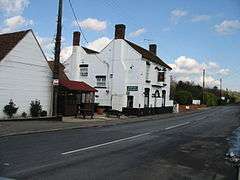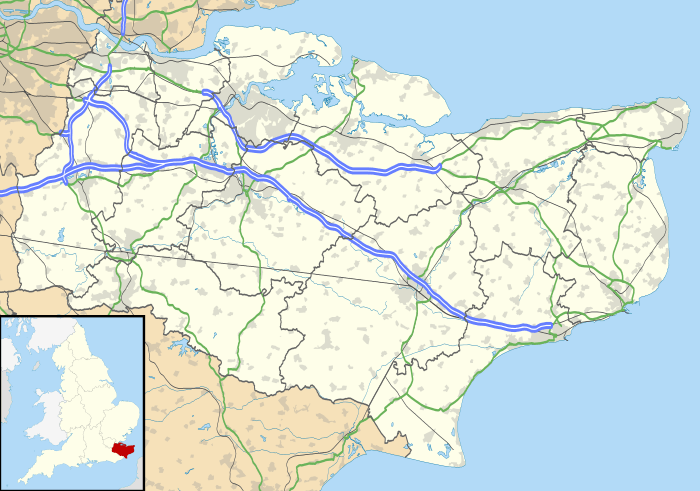Dunkirk, Kent
Dunkirk is a village and civil parish between Faversham and Canterbury in southeast England. It lies on the Canterbury Road between Boughton under Blean and Harbledown.[2] This was the main Roman road from the Kentish ports to London, also known as Watling Street.
| Dunkirk | |
|---|---|
 The Red Lion Inn, Dunkirk | |
 Dunkirk Location within Kent | |
| Population | 1,187 (2011)[1] |
| District | |
| Shire county | |
| Region | |
| Country | England |
| Sovereign state | United Kingdom |
| Post town | Faversham |
| Postcode district | ME13 |
| Police | Kent |
| Fire | Kent |
| Ambulance | South East Coast |
| UK Parliament | |
Toponymy
The origin of the village's name is still not very clear, but it is understood to come from a house called "Dunkirk", lived in by a Fleming from Dunkirk on the border between France and Belgium.
History
In 1800, according to Edward Hasted, the village was once part of the king's ancient forest of Blean in the 'hundred of Westgate'.[2]
Dunkirk's main claim to fame is that in 1838 it was the scene of the last armed rising on British soil, the Battle of Bossenden Wood to the north of the village.[3] Eleven men died when a band of farm labourers were intercepted by a detachment of soldiers.
In 1940 during World War II, the RAF Chain Home radar station in Dunkirk was bombed several times by the Luftwaffe.
In 2011, the villagers had an official opening of their replacement Village Hall. £230,000 was raised to pay for the new hall.[4]
References
- "Civil Parish population 2011". Retrieved 1 October 2015.
- Hasted, Edward (1800). "Parishes". The History and Topographical Survey of the County of Kent. Institute of Historical Research. 9: 2–7. Retrieved 12 February 2014.
- Reay, B (1 October 1990). The last rising of the agricultural labourers: rural life and protest in nineteenth-century England. Oxford Clarendon Press. p. 85. ISBN 0-19-820187-7.
- "Villagers celebrate official opening of finished new hall". canterburytimes.co.uk. 16 September 2011. Archived from the original on 27 February 2014. Retrieved 20 February 2014.